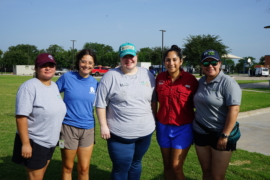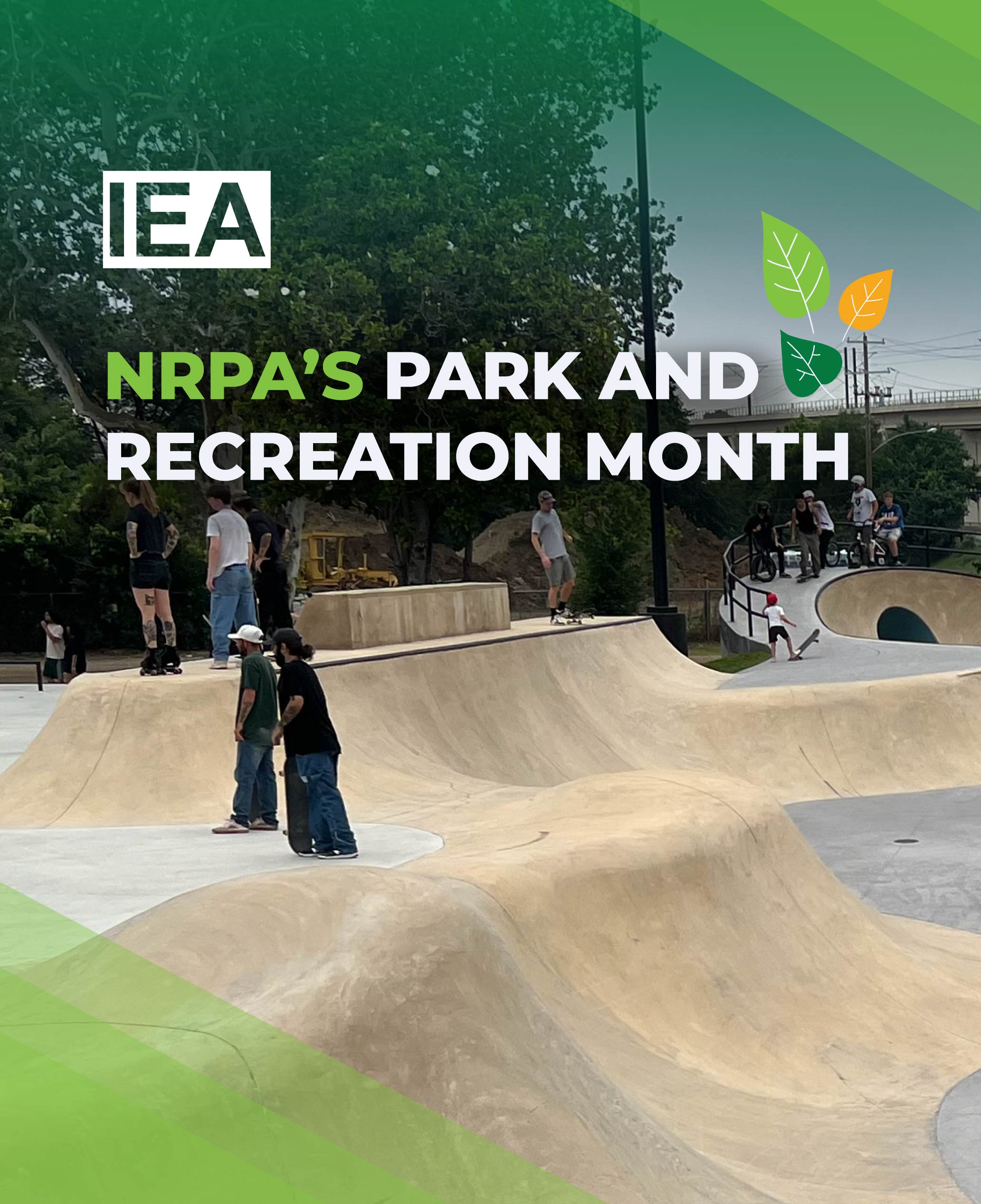Designing Connection: How Parks and Trails Bring Communities Together
EXPLORING HOW THOUGHTFUL DESIGN TRANSFORMS GREEN SPACES INTO PLACES OF CONNECTION, CREATIVITY, AND BELONGING.
In July, communities across the country celebrate NRPA’s Park and Recreation Month, an initiative launched by the National Recreation and Park Association (NRPA) to recognize the vital role local parks, trails, and recreational spaces play in strengthening communities. Since its inception in 1985, Park and Recreation Month has spotlighted how parks and recreation spaces improve our quality of life and provide opportunities for connection, wellness, and environmental stewardship. This month is a time to honor the professionals who help maintain these spaces and encourage everyone to get outside, get active, and get involved in their local green spaces.
ENGINEERING WITH A PURPOSE
 Richard Stauffer, PE, our Parks and Recreation Subject Matter Expert, recently supported the City of Dallas Park and Recreation Department through IEA’s staff augmentation services. In this role, he helped manage key projects such as the construction of the Bachman Skate Park, the design of the SOPAC Trail extension, the White Rock Lake Master Plan update, and improvements at Cedar Crest Golf Course.
Richard Stauffer, PE, our Parks and Recreation Subject Matter Expert, recently supported the City of Dallas Park and Recreation Department through IEA’s staff augmentation services. In this role, he helped manage key projects such as the construction of the Bachman Skate Park, the design of the SOPAC Trail extension, the White Rock Lake Master Plan update, and improvements at Cedar Crest Golf Course.
One of Richard’s projects that’s especially close to his heart is the Bachman Skate Park, the first in-ground skate park for the City of Dallas.
For the Bachman Lake Skate Park project, the main objective of the design was to provide a layout allowing the seamless transition between areas with greater or lesser technical difficulty, simulate a real-world skating environment, and allow skaters to continually challenge their abilities.
Richard shared, “During construction, we made field modifications to improve flow, momentum, and overall skateability based on public input, while also addressing drainage, accessibility, and tree preservation. Public coordination with neighborhood groups, Park Advocacy groups, and the skateboarding community representatives was crucial during the design process, from selection of the site, environmental protection, design features, and overall size within the available budget.”
Reflecting on projects like Bachman, Richard shared why Park and Recreation work resonates so deeply with him.
“I’ve worked across various sectors in municipal government, from public works to floodplain management, but my role in the Parks and Recreation Department has been the most personally rewarding. It’s a unique part of city work where we’re not just building infrastructure, we’re creating spaces that support people’s physical and mental well-being. Unlike other departments, we see firsthand how our work helps residents unwind, challenge themselves, and momentarily escape the stresses of daily life. That makes every challenge worth it.”
Richard’s experience reflects the technical challenges and human impact that make parks and recreation work so meaningful. Whether it’s designing a skate park to maximize flow and safety or collaborating with community groups to fine-tune every element, his work illustrates how engineering and empathy come together to shape spaces that serve everyone.
PARKS AS PLACES OF BELONGING
 That same passion for community-centered design is shared by Jennifer Nelson-Smith, IEA’s Marketing Director, who has experienced firsthand how parks and recreation bring people together in joyful and unexpected ways.
That same passion for community-centered design is shared by Jennifer Nelson-Smith, IEA’s Marketing Director, who has experienced firsthand how parks and recreation bring people together in joyful and unexpected ways.
This past month, Jennifer attended several NRPA events to explore how civil engineering firms like IEA can expand their impact through the thoughtful design of parks and trails.
“What I love most about Park and Recreation Month is seeing the community connecting in green and recreation spaces. At the Farmers Branch Aquatics Center’s 10-Year Anniversary party, I saw people with different backgrounds relaxing and enjoying themselves together. Smiles and children’s laughter all around us,” Jennifer said excitedly. “Parks and Recreation departments offer a unique opportunity to bring our communities together to recharge after long weeks and foster a sense of belonging.”
She also spoke about how Parks and Recreation has enriched her own life.
“When I moved to Farmers Branch—a city known as a ‘City in a Park’—I was a new homeowner looking to get involved, so I applied for the Park and Recreation Board and was selected a few months later. Joining the Farmers Branch Park and Recreation Board helped me learn about all the parks, all the facilities and amenities, and all the amazing people that are in my community. I feel more centered and fulfilled engaging in community events and activities. I’m really grateful for the Farmers Branch Parks & Recreation employees who work so hard to keep all the spaces maintained and accessible for the residents.”
Jennifer’s reflections during Park and Recreation Month underscore the importance of intentional design, where engineering meets empathy and community input fuels innovation. Parks and trails are more than amenities; they’re vital community anchors that foster connection, well-being, and a strong sense of place.
At IEA, we believe that thoughtfully designed parks and trails are more than just green spaces; they are essential infrastructure that shapes how Texans live, connect, and thrive. These spaces impact where we walk our pets, bring our children to play, spend time with loved ones, and go to relax and recharge. With proven experience in municipal infrastructure, trail connectivity, hydrology and hydraulics, and structural design, IEA is proud to help shape public spaces that enrich daily life and leave a meaningful, lasting impact on the communities we serve.

